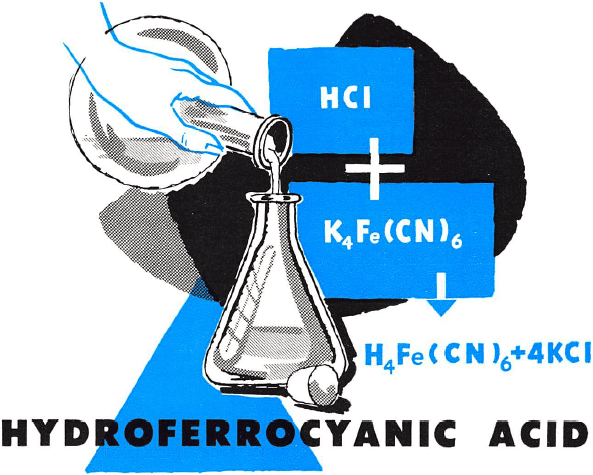Ferrocyanides Usage & Applications

Alkali metal ferrocyanides and their easily obtainable derivatives such as ferricyanides, nitroprussides, and hydroferrocyanic acid have found application in a wide variety of fields during the two centuries that they have been known. Through continued research new uses are being uncovered with increasing frequency. Most of these applications depend upon oxidation-reduction potentials, sequestering and precipitating […]
Hydroferrocyanic Acid

PHYSICAL PROPERTIES of Hydroferrocyanic Acid Hydroferrocyanic acid is most conveniently prepared by the treatment of an alkali metal ferrocyanide with a strong mineral acid. A typical preparation would involve the treatment of a saturated aqueous solution of potassium ferrocyanide with concentrated hydrochloric acid. The acid separates as a crystalline solid that may be purified further by […]
Recycling Municipal Waste Garbage
Resource Recovery for Municipal Solid Waste Disposal—An Overview Archeological information on the nature of man’s earliest societies comes primarily from examination of discarded materials left on what was then open countryside. In a nomadic society, populating the surface of the earth very sparsely, there was no reason for concern. Even as man “settled down” and […]
CuSO4 Copper Sulfate Crystallization
CuSO4 Crystallization for Typically Acidic Extraction: A small body of acid-leachable copper ore or a small existing stream of copper-bearing acidic mine water is often unable to justify a plant to produce cathode copper. Electrowinning is capital intensive, and small reserves are generally considered higher risks for financing. Electrowinning is also intensive in electric power and […]
Mine Waste Leaching
Formation and Transport of Acid or Toxic Leachate The factors which control the quantity and quality of leachate formed from mining wastes are many and complex. These factors include not only the physical and chemical characteristics of the waste, but also climatological, hydrological, geological, and biological factors. The method of waste disposal and the selection […]
Waste Mine Tailings Characterisation
Any critical evaluation of the potential for contamination of groundwater by leachates from mining wastes must include consideration of the waste quantities and locations, the physical and chemical characteristics of the waste, and the waste disposal practices. The primary types of solid wastes generated by mining activities include overburden and waste rock from surface mining, […]
Mine Tailings Disposal Methods
As discussed previously, the primary types of solid wastes generated by the mining industry are overburden and waste rock from surface mining, waste rock from underground mining, bulk tailings from metal-ore and non-metal mineral beneficiation and milling processes and refuse from coal preparation-plant processes. The methods commonly employed for disposal of these wastes in each […]
Hydrothermal Boehmite Precipitation
The currently proposed method for the recovery of alumina from nonbauxitic materials involves acid leaching (Figure 1). Primary emphasis is on kaolin clays. To date, leaching by nitric acid, hydrochloric acid, and sulfurous acid has been considered, and it appears that leaching with hydrochloric acid (25-27%) is the most practical process. The first step in […]
Garnet Abrasives
The mention of Garnet as a Gem is one of the very common misunderstandings about this mineral. The Garnet as a semiprecious stone does not belong in the story of Garnet, the industrial tool, and yet it shares with the diamond the double, virtue of being a thing of beauty and utility. Prior to about […]
Copper Nickel Flotation
The Bureau of Mines investigated the flotation responses of two copper nickel ore samples from the Duluth Complex with the objective of recovering bulk sulfide concentrates. One of the ores studied was taken from a test pit; the other was taken from a test shaft. The samples were quite similar except that the pit sample […]
